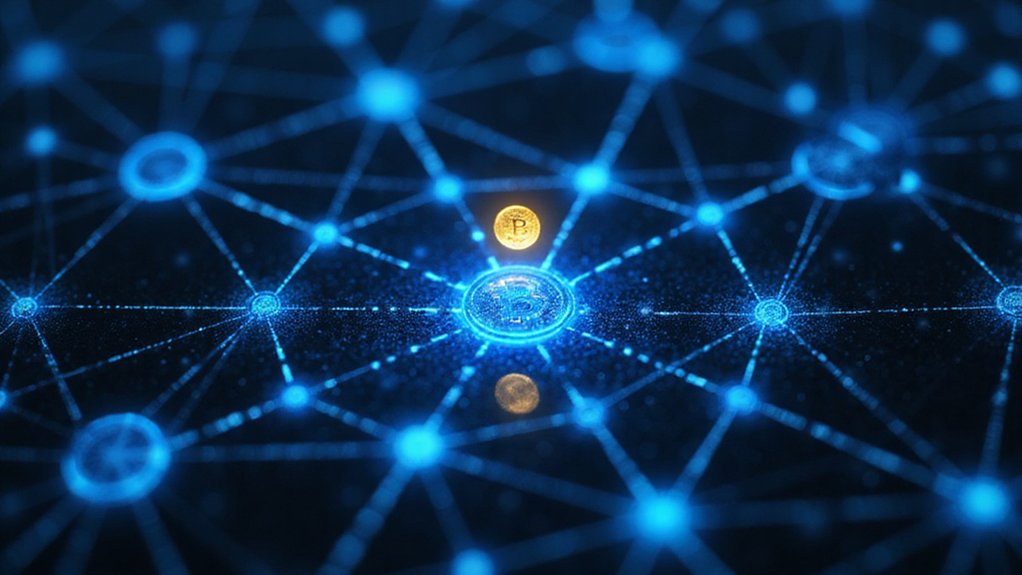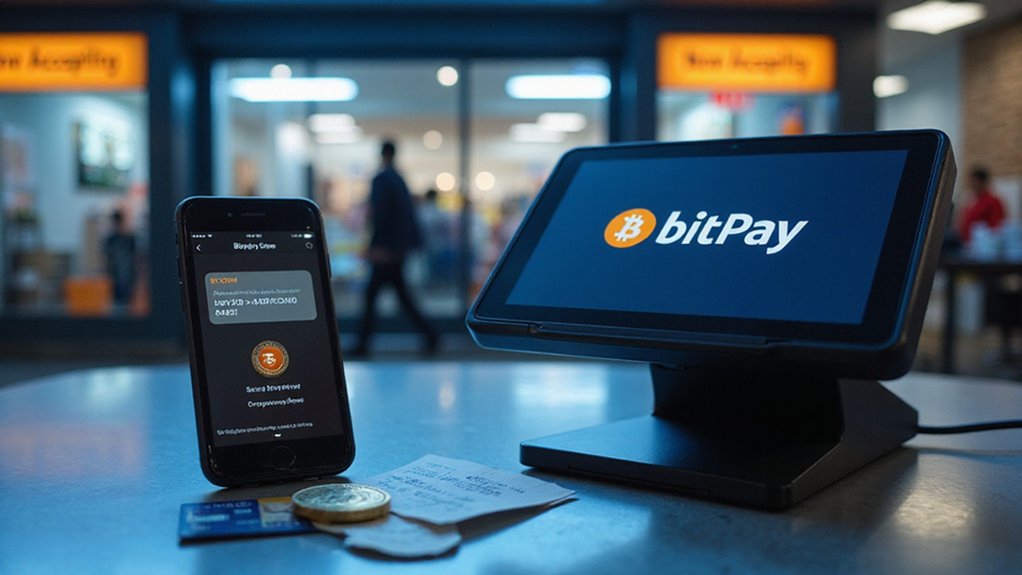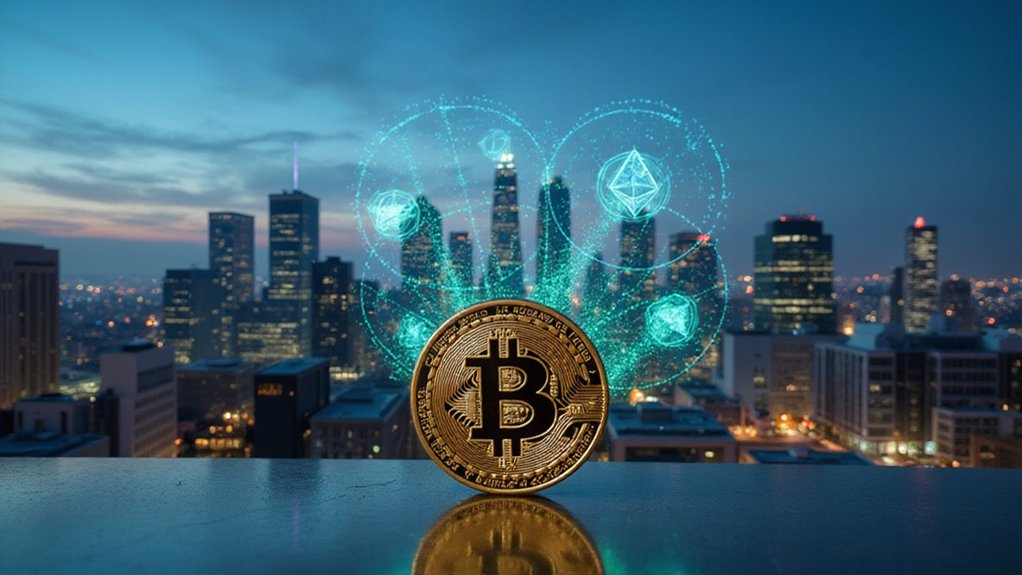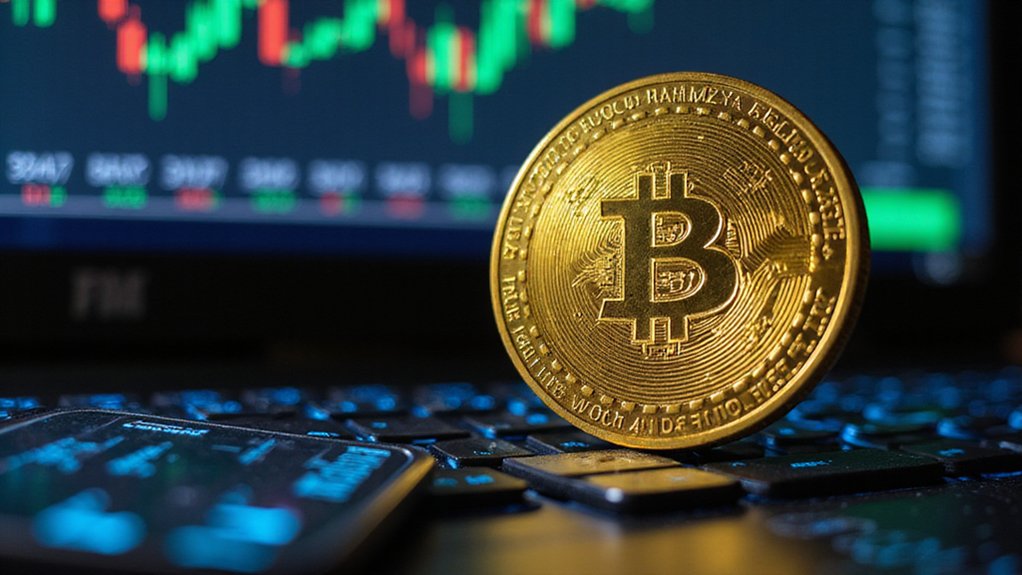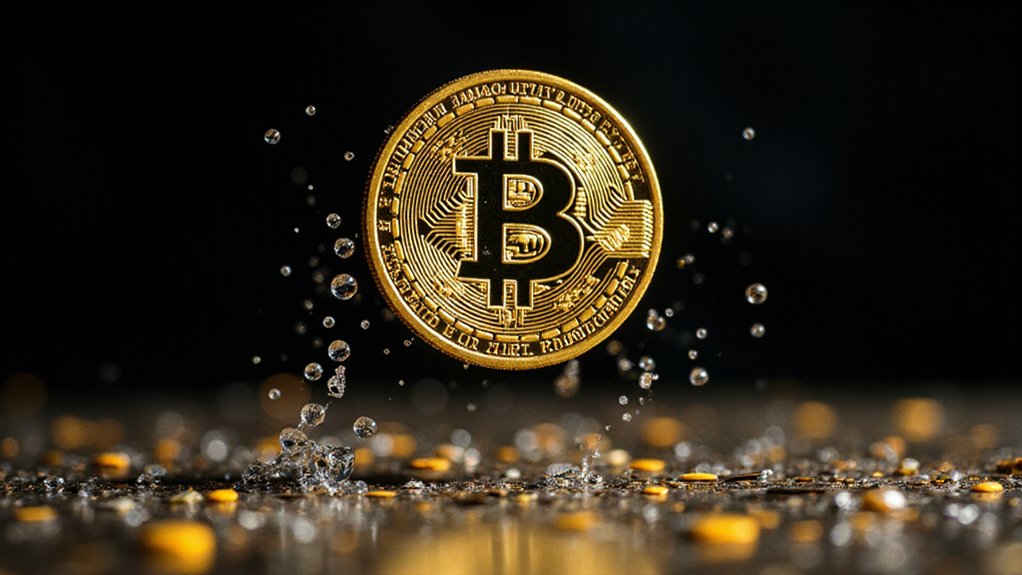Decentralized Finance (DeFi) represents blockchain technology’s most disruptive financial innovation—a parallel economic system operating without traditional gatekeepers. By leveraging smart contracts on permissionless networks, DeFi enables peer-to-peer lending, trading, and insurance services that traditional banks simply cannot match. Despite legitimate concerns about security vulnerabilities and regulatory uncertainty, DeFi’s explosive growth (from $1B to $120B+ in five years) suggests this isn’t merely a cryptographic curiosity. The financial revolution awaits those willing to navigate its complexities.

The financial landscape has undergone a seismic shift with the emergence of Decentralized Finance—DeFi for the acronym-inclined—a revolutionary ecosystem that promises to dismantle the traditional banking infrastructure that has dominated monetary systems for centuries.
Born in 2018, DeFi represents the culmination of blockchain technology‘s disruptive potential, creating an open financial system where peer-to-peer transactions occur without the historically sacrosanct intermediaries (those venerable institutions that have, quite comfortably, extracted fees at every conceivable touchpoint).
At its core, DeFi leverages programmable, permissionless blockchains and smart contracts to facilitate a complete suite of financial services—lending, borrowing, trading, insurance—all without requiring users to surrender control to centralized authorities.
This architecture, layered and remarkably composable, allows various protocols to interact seamlessly, creating an interconnected ecosystem where financial building blocks can be assembled in novel configurations. The distributed ledger technology ensures that all transactions are securely recorded, verified, and encrypted across the network.
The traditional banking model, with its gatekeepers and friction points, appears positively antiquated by comparison.
However, this financial liberation comes with significant caveats.
The same code-based infrastructure that enables DeFi’s innovations harbors vulnerabilities that have resulted in spectacular hacks and asset losses.
Recent platforms like World Liberty Financial have raised substantial capital exceeding $550 million for developing crypto lending tools, though critics point to their centralized governance structure as contradicting true DeFi principles.
The familiar guardrails of regulated finance—deposit insurance, fraud protection, recourse mechanisms—are conspicuously absent in this frontier economy.
High yields (sometimes reaching implausible percentages that would make traditional bankers apoplectic) often mask corresponding high risks.
The regulatory environment surrounding DeFi remains nebulous at best.
Traditional financial regulations, designed for centralized entities with identifiable controlling parties, struggle to address protocols that exist as distributed networks.
Some platforms have opted for voluntary compliance, while others embrace the regulatory vacuum as a feature rather than a bug.
Despite these challenges, DeFi’s promise of financial inclusion cannot be dismissed.
For the unbanked and underbanked populations globally, these protocols offer unprecedented access to sophisticated financial instruments previously reserved for privileged participants in developed economies.
The question remains whether DeFi will transform mainstream finance or remain a fascinating but peripheral experiment.
The sector has demonstrated remarkable growth, expanding from just total value locked of $1 billion in 2020 to over $120 billion by 2025, showcasing both investor confidence and practical utility in this revolutionary financial paradigm.
Frequently Asked Questions
Is Defi Safe for Everyday Investors?
DeFi presents a precarious proposition for everyday investors.
While offering innovative financial alternatives, it remains fraught with significant hazards—smart contract vulnerabilities, regulatory ambiguity, and absence of consumer safeguards chief among them.
The market’s notorious volatility, coupled with the technical complexity inherent to blockchain protocols, creates a potentially treacherous landscape for the uninitiated.
Improvements through audits and emerging regulations may eventually mitigate these risks, but currently, DeFi demands exceptional caution from average investors.
How Do Defi Protocols Handle Regulatory Compliance?
DeFi protocols navigate the regulatory labyrinth through varied approaches—some embrace compliance, while others maintain a purist decentralized stance (often at their peril).
Protocols increasingly implement KYC/AML procedures, on-chain analytics, and risk assessment tools, particularly at fiat on-ramps.
Many establish legal entities in favorable jurisdictions, while DAOs adopt governance frameworks that enable rapid adaptation to regulatory shifts.
The tension between maintaining true decentralization and appeasing regulators remains the sector’s defining paradox.
What Skills Do I Need to Participate in Defi?
Participating in DeFi requires a multifaceted skill set: blockchain fundamentals, cryptocurrency knowledge, and basic understanding of smart contracts form the foundation.
Technical abilities—particularly in Solidity for developers—complement essential financial acumen for risk assessment and portfolio management.
Users must develop security awareness (one’s private keys are, after all, only as secure as one’s practices) and cultivate adaptability, as yesterday’s yield farming strategy becomes tomorrow’s cautionary tale in this rapidly evolving ecosystem.
Can Traditional Financial Institutions Adopt Defi Technologies?
Traditional financial institutions are increasingly adopting DeFi technologies, albeit with characteristic institutional caution.
The regulatory clarity emerging post-2024 has emboldened titans like JP Morgan and BlackRock to venture into tokenization and blockchain products.
Their approach—typically hybrid models combining private infrastructure with public protocols—addresses compliance requirements while capturing innovation benefits.
Scalability issues and security vulnerabilities remain significant hurdles, yet competitive pressures (that first-mover advantage is no trifling matter) continue driving adoption despite lingering legal uncertainties around decentralized governance.
How Does Defi Impact Global Financial Inclusion?
DeFi’s impact on global financial inclusion is transformative, offering banking alternatives to the 1.7 billion unbanked—most with mobile access.
By circumventing traditional infrastructure requirements, DeFi protocols enable peer-to-peer lending, drastically reduced remittance fees, and formalization of previously informal economies.
Layer-2 solutions address scalability concerns, while smart contracts eliminate discriminatory credit checks.
Despite challenges (regulatory uncertainty, connectivity gaps), DeFi’s removal of gatekeepers democratizes capital access for marginalized populations worldwide—a remarkable financial revolution hiding in plain sight.
